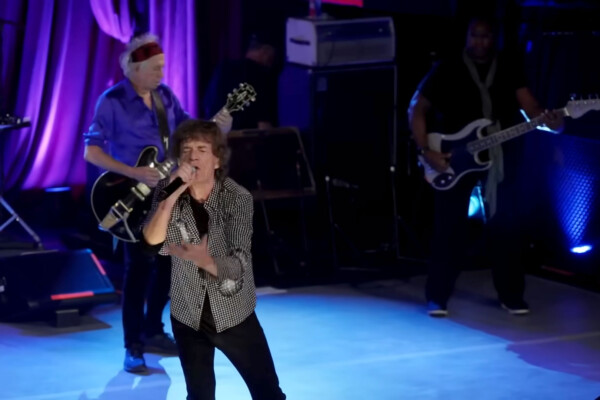Bass Transcription: Mick Taylor’s Bass Line on The Rolling Stones’ “Tumbling Dice”
Every bassist has been in situations where they have had to hold down a one-chord or repeating bass line ostinato for long periods of time or an entire song. It can be challenging to approach these mind-numbing repetitive songs and keep it interesting while not overplaying. Many Rolling Stones’ songs feature verse sections, such as this, that consist of only one chord (“Street Fighting Man”, “Silver Train”, “Shake Your Hips”, etc.) Despite the very few chords employed, Mick Taylor’s bass work plays a crucial role in giving the harmonically static verse of “Tumbling Dice” its signature groove and forward motion.
The important quality of the verse section is the upbeat accent on the “and” of beat 4. This gives the first verse its distinct character and makes the groove sound not-so-plain, despite consisting of just one chord. Taylor always accents the upbeat of 4 throughout the first two verses but in subsequent verses, other upbeats are accented, such as the “and” of beat 2 and/or 3 (50, 60) just to prevent the one-chord verses from sounding stagnant.
To ramp into the chorus, Taylor always performs a B7 type-of-fill, 1-2 bars before the chorus to signal the change of section and harmony (9, 17, 25, 35, 42-43, 55, 64-65). This helps to intimate a “widening” affect that the song is now arriving into a new harmonic area.
I appreciate that in the choruses Taylor opts to play the F? to B changes as a Badd9 chord. By using this inversion to connect the two chords, the choruses sound more resonant and “open”, to contrast the “closed” sound of the verses which primarily are characterized by rhythmic propulsion and articulation. This “openness” also foreshadows a more florid bass sound that arrives toward the end of the song.
The bridge is the full unlocking of the bass part. Here Taylor is touching all the main and extended chord tones of B— B, D?, F?, C?, and G? (72-73). This demonstrates forethought and an unfolding in the bass part. The bass started as just a single note line for several bars in the first verse and has now transformed into a full melodic arpeggio with upper-register flourishes.
These “open” vs. “closed” playing approaches are what makes a bass part phenomenal. Music is driven by a sense of contrast, tension, and release, where it’s often the bass player’s responsibility to bring out these compositional dynamic changes through his/her playing. To enhance the quality of song you are performing, it’s helpful to attempt incorporating these formative ideas into your approach, just as Mick does in this instance for The Rolling Stones.
Download the transcription and follow along with the video:
For the gear heads: I’m playing this on a 1967 Vox Sidewinder VI, strung with La Bella Flats.
Brian Wroten is an acoustic bass guitar specialist and composer. Brian operates a transcription based website and Youtube channel where you can view his transcriptions and original music.



